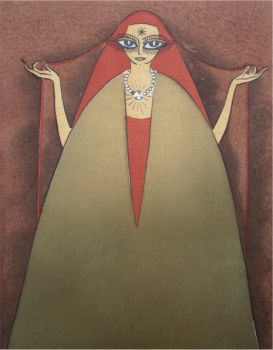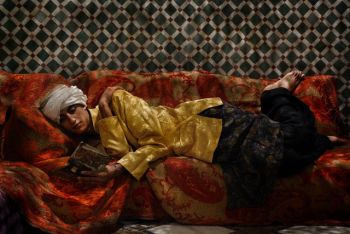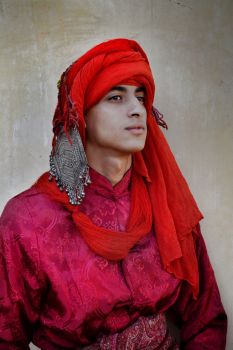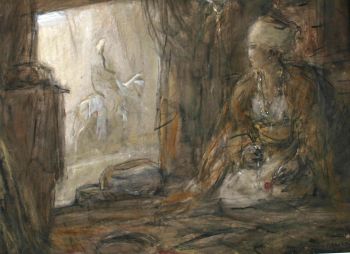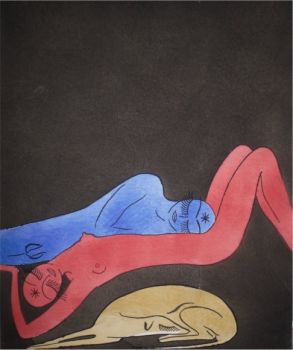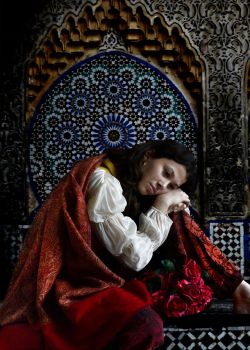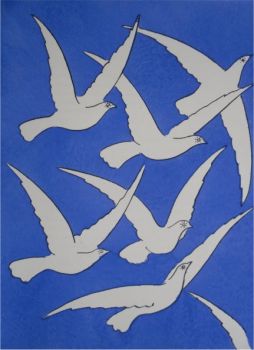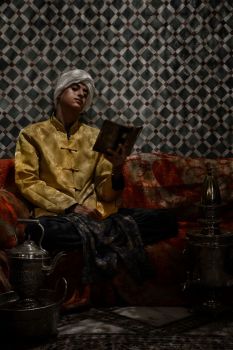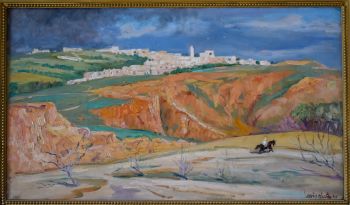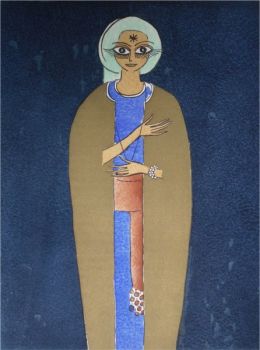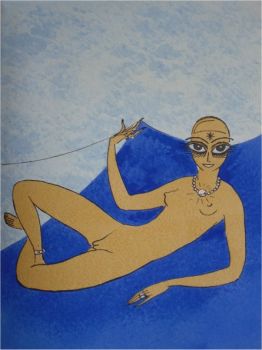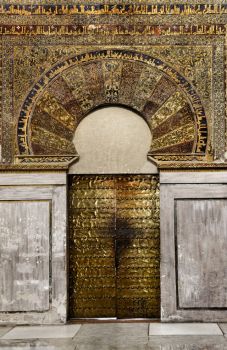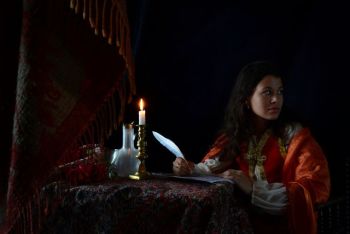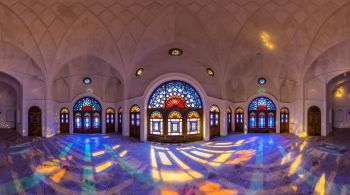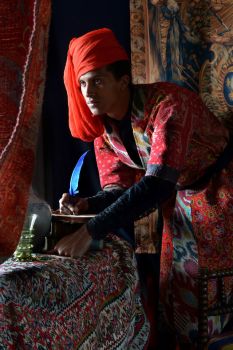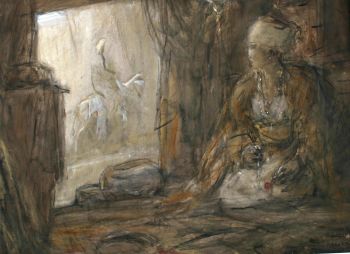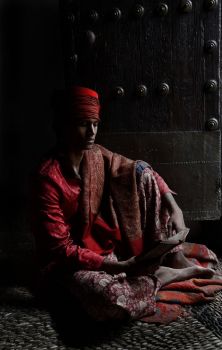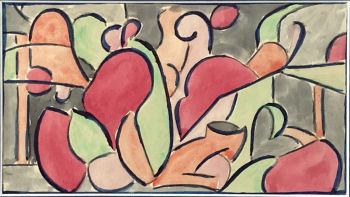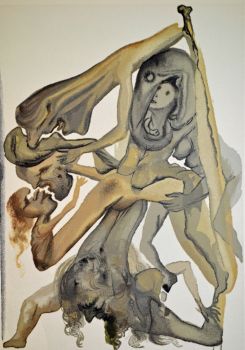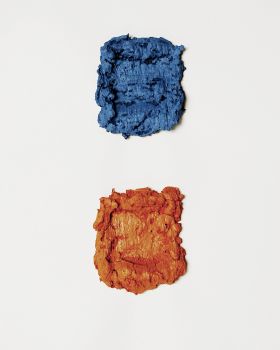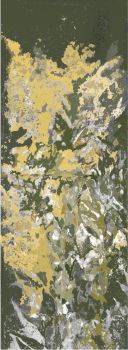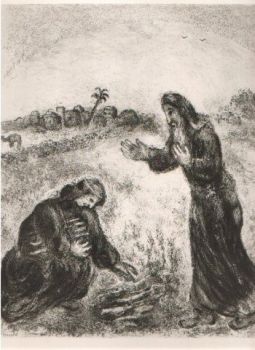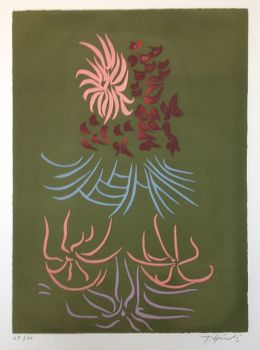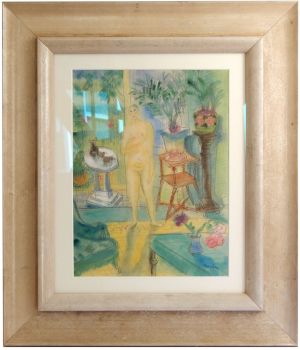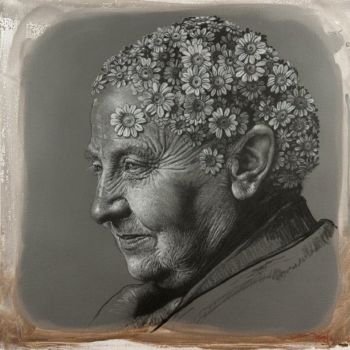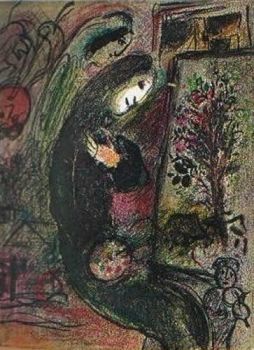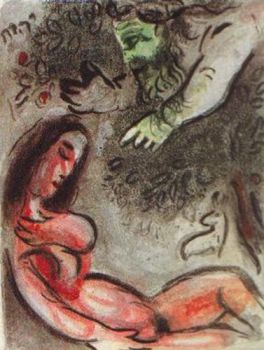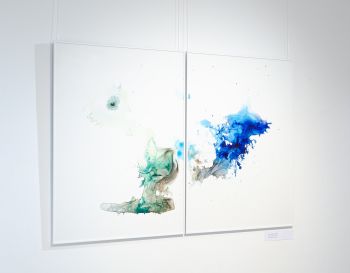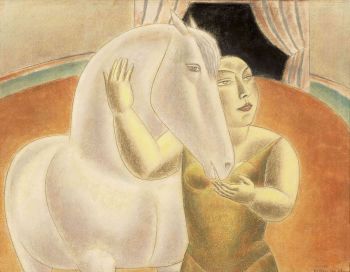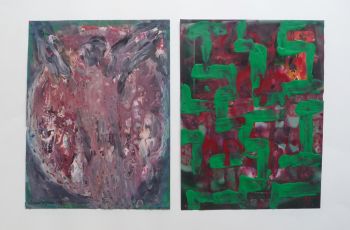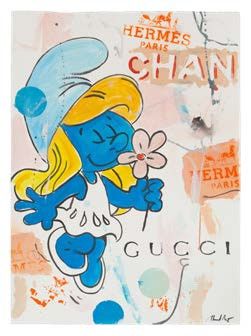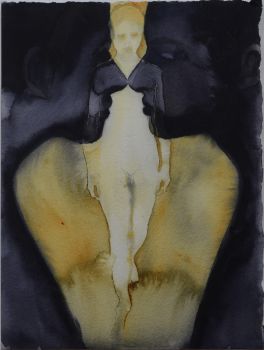Erpenius's excellent Arabic grammar 1628
Thomas van Erpe (Erpenius)
CartaPelle
Attualmente non disponibile tramite Gallerease
- A proposito di opere d'arteRudimenta linguae Arabicae.
Leiden, Boneventura and Abraham Elzevier, 1628.
Small 8vo (15 x 9.5 cm).
With title-page printed in red and black. 19th-century green sheepskin.
The rare second, corrected edition of Erpenius's influential Arabic grammar, which remained popular until well into the 19th century. Erpenius, one of the most distinguished orientalists of his day, published his famous Grammatica Arabica in 1613, followed in 1620 by the Rudimenta linguae Arabicae, a slightly abridged version of the Grammatica. It is dedicated to the Maronites Johannes Hesronita and Gabriel Sionita, the latter of whom would later edit the 1638-edition of the Rudimenta. It includes the Arabic text with Latin transcriptions of chapter 64 of the Quran.
Annotation on title-page: "Collegii Remensis / Societatis Jesu / Catalogo Inscriptur". Fine copy.
Rahir 263; Schnurrer 60; Smitskamp 69b; STCN (3 copies); Willems 295. - A proposito di opere artistaThomas van Erpe/Thomas Erpenius (1584, Gorinchem – 1624, Leiden), noto anche come Thomas van den Erpe, è stato un famoso orientalista olandese. Dopo aver studiato lingue orientali - gli consigliò Scaligero - e teologia a Leida, viaggiò in Europa. Soggiornando a Parigi fece amicizia con Casaubon, celebre studioso classico e filologo. A Parigi prese anche lezioni di arabo ea Venezia studiò il turco, il persico e l'etiope. Erpenius fu nominato professore di arabo e altre lingue orientali all'Università di Leida nel 1613. Vi fondò una tipografia per l'arabo e altre lingue orientali. Ha stampato la sua prima edizione delle favole di Luqman come prima pubblicazione di prova (senza punti vocalici per i tipi arabi). Le annotazioni che fece per la sua copia furono incorporate nella seconda edizione (con punti vocalici) del 1636. Le favole degli animali di Lukman erano una parte importante della cultura araba preislamica e sono ancora popolari oggi. La biblioteca di Erpenius fu trasferita alla Biblioteca dell'Università di Cambridge nel 1632. Ha prodotto molte opere, tra le altre grammatiche di diverse lingue orientali: arabo, ebraico, caldeo, siriano.
Artwork details
Related artworks
Tilmanus Nicolaus Maastricht
Missale Romanum con fornimenti d'argento olandesi1788 - 1792
Prezzo su richiestaJacob J. Roosjen SRI
Engelbert Kaempfer
IL LIBRO DI ENGELBERT KAEMPFER1651 - 1716
Prezzo su richiestaZebregs & Röell - Fine Art - Antiques
Antonie Derkinderen
Memory book Exhibition of Dutch Painting1892
Prezzo su richiestaKunsthandel Pygmalion
Engelbert Kaempfer
IL LIBRO DI ENGELBERT KAEMPFER1651 - 1716
Prezzo su richiestaZebregs & Röell - Fine Art - Antiques
Hermann Nitsch
"UNDER MY SKIN" Signed book incl. small artwork and DVD in a matching box2010 - 2014
Prezzo su richiestaGallerease Selected
Yoko Ono
YOKO ONO: "ARISING" SIGNED BOOK PLUS SMALL ARTWORK 2010 - 2014
Prezzo su richiestaGallerease Selected
Tilmanus Nicolaus Maastricht
Missale Romanum con fornimenti d'argento olandesi1788 - 1792
Prezzo su richiestaJacob J. Roosjen SRI
LAWRENCE WEINER
"SKIMMING THE WATER [MENAGE A QUATRE]" Signed book plus small artwork2010 - 2014
Prezzo su richiestaGallerease Selected
1 - 4 / 22Elisabeth Treskow
Lapislazzuli afgano intarsiato con oro su un supporto d'argento1950 - 1960
Prezzo su richiestaJacob J. Roosjen SRI
1 - 4 / 24Rene Rietmeyer
"Portrait of Rauschenberg, January 2002"2002
Prezzo su richiestaEuropean Cultural Centre Collection
1 - 4 / 24

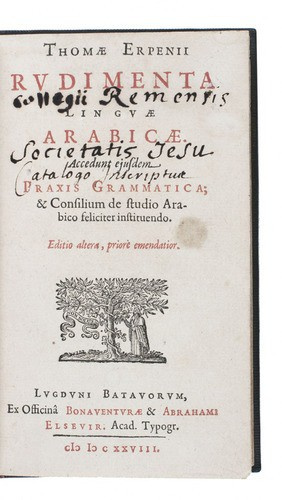





















!["SKIMMING THE WATER [MENAGE A QUATRE]" Signed book plus small artwork by LAWRENCE WEINER](https://media-2.gallerease.com/images/442bfd5f-fc31-4e18-a2fa-ee0c08eade64/350x350/skimming-the-water-menage-a-quatre-signed-book-plus-small-artwork.jpg)

